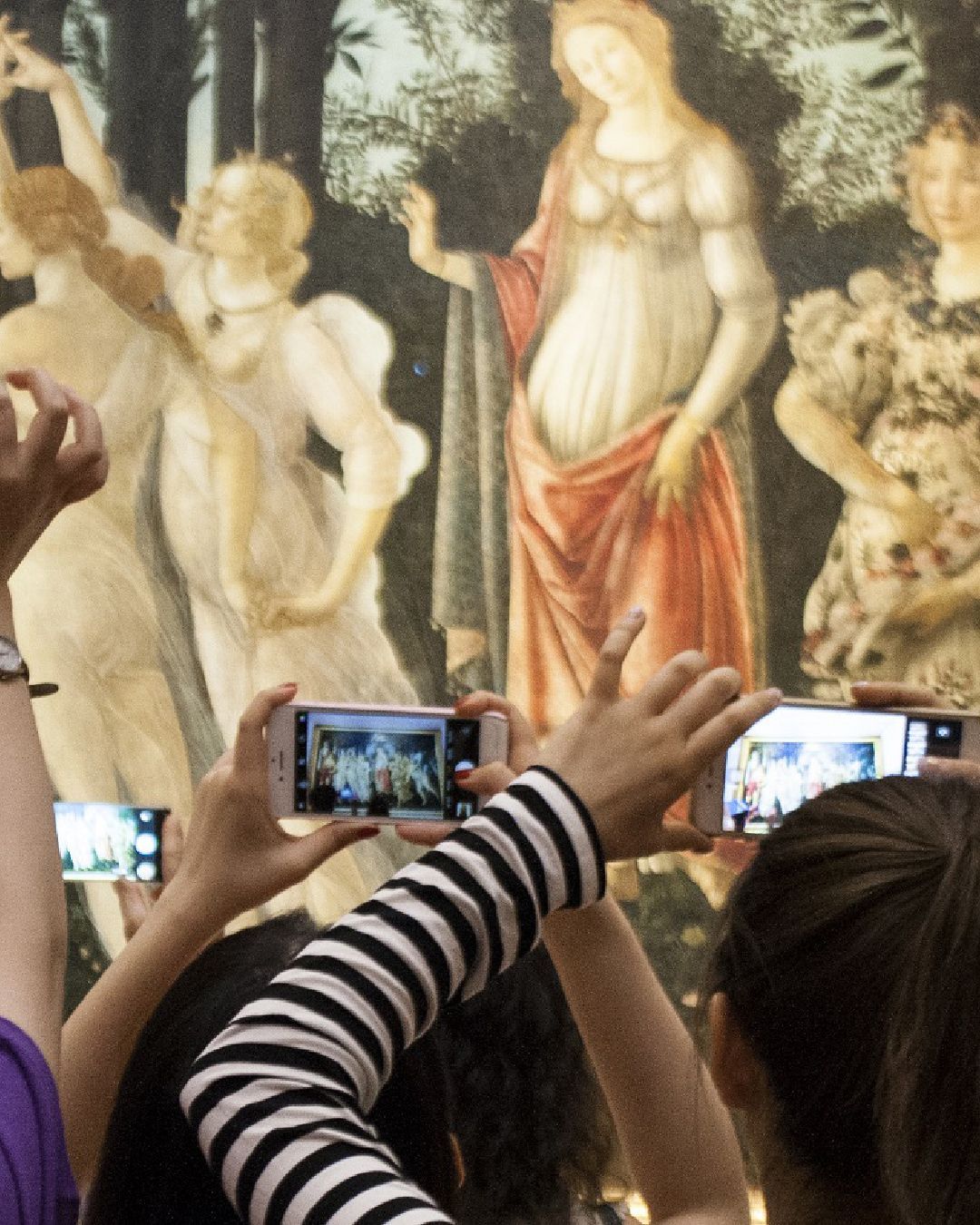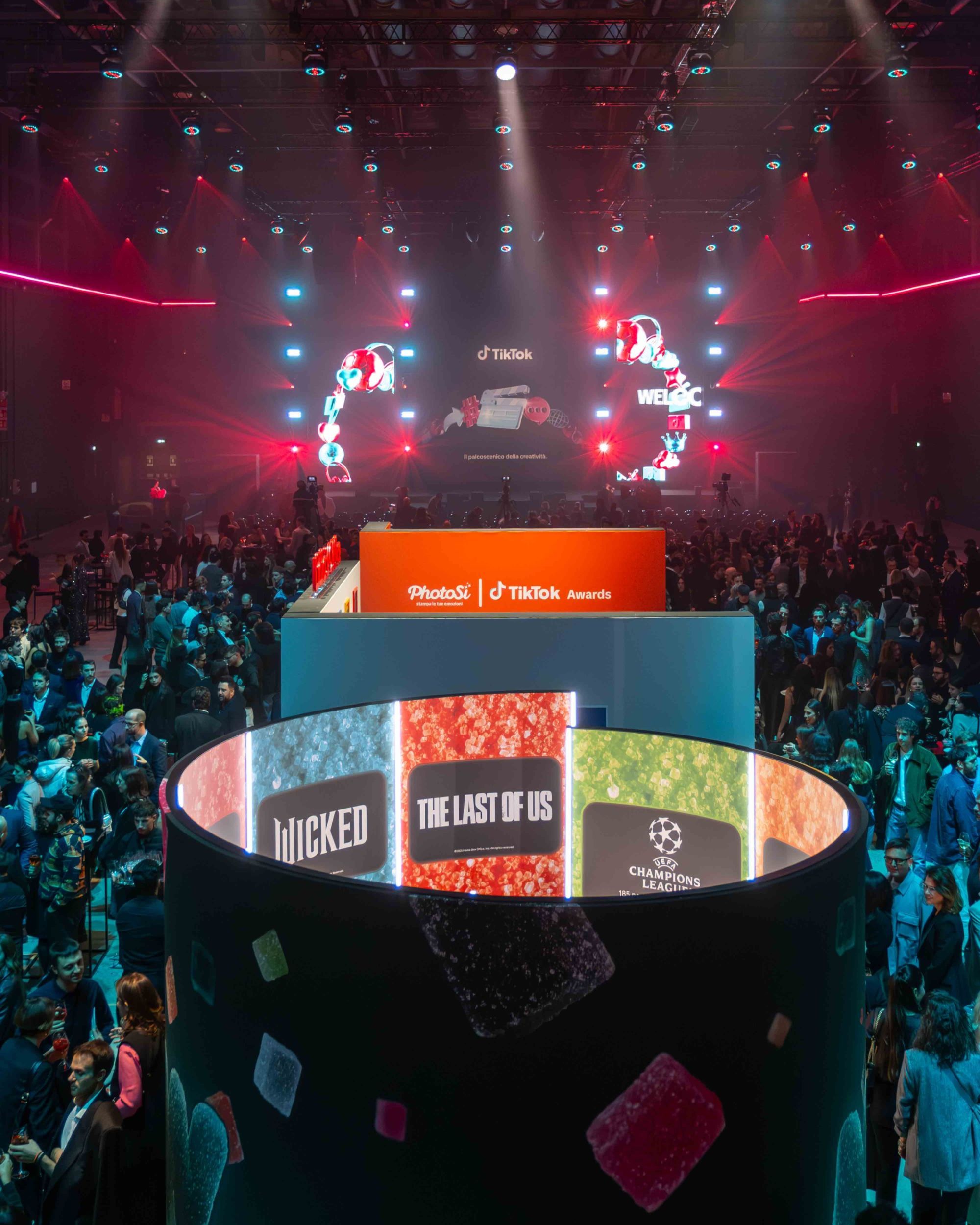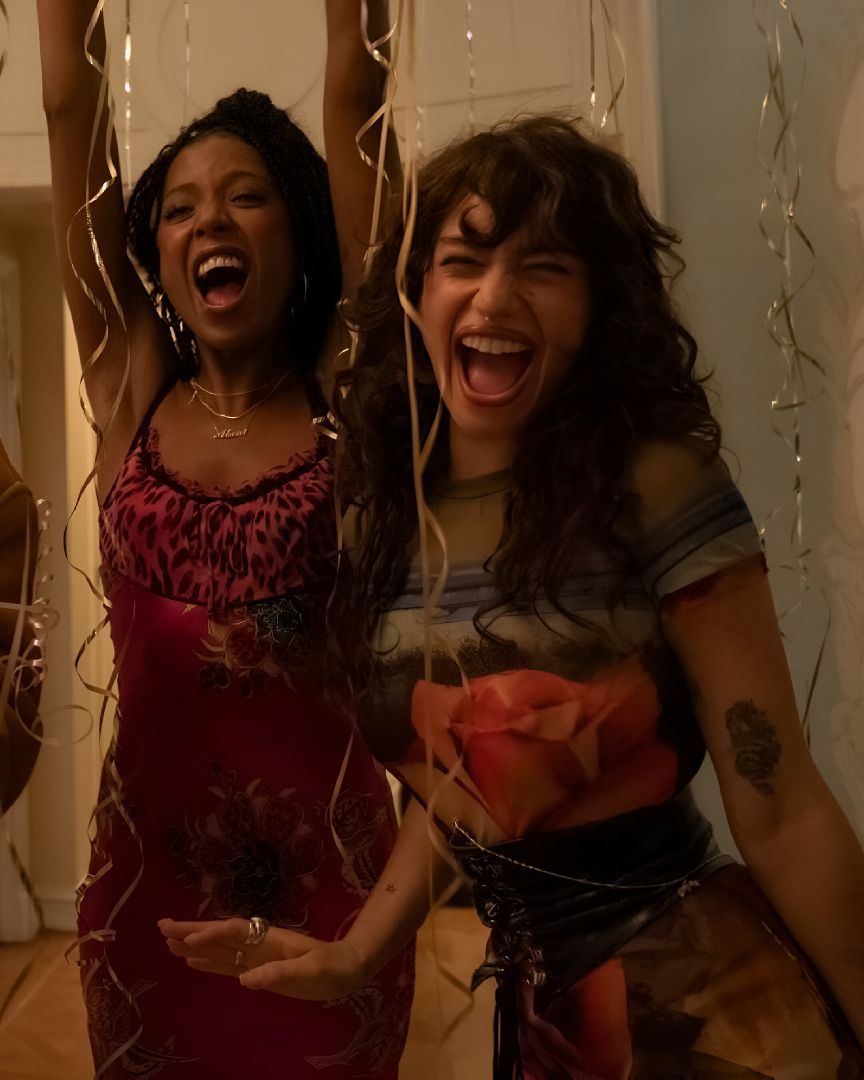
Italian art on TikTok and the future of toxic tourism From social media irony to daring pop initiatives, the marketing phenomenon playing with high-low
Trivialisation of culture or pop glorification? There's a thin line separating the common perception of Italian museums on social media, and it has paradoxically been the real secret of success for art institutions. In Italy, the TikTok account of the Uffizi Galleries has now more than 160,000 followers, a milestone achieved by relying on the essentially ironic tone with which the museum narrates the works exhibited in its rooms. Between the use of viral audios and the involvement of established creators, the Uffizi has become a favourite among young people, on a par with its international counterparts such as the Tate Gallery in London, which has become even more famous thanks to its numerous evening events with DJ sets and modern art exhibitions, and the MET in New York, which is recognised worldwide for its annual Gala event held by Vogue. But while there are those in Italy who consider the popularisation of museums through social media to be a disgrace to the country's cultural heritage, there are also those who recognise in this a tangible opportunity for many to access art and history education. In recent months we have discussed the reality of toxic tourism and the risky advertising tactics at length - most recently the unveiling of the Instagram page of Venus Italy, a computerised testimonial set up by the Ministry of Tourism last April - unfortunately unsuccessful, but the example of the Uffizi is a different story. And the numbers prove it: in 2022 they reached more than double the number of visitors of the previous year, a total of no less than 4 million - for comparison, the city of Milan has 1.3 million citizens. Behind the Florentine museum's TikTok page was initially Ilde Forgione, now an expert in cultural communication and a teacher in the field for master courses and Ted Talks, with whom we had the opportunity to have a chat to explore the topic in depth.
@uffizigalleries @Matto Varini ci insegna come prevenire tragedie di fronte alla #Medusa di #Caravaggio #uffizigalleries suono originale - uffizisocial
The idea of landing on TikTok with an Uffizi account came from the director of the Florentine Galleries, Eike Dieter Schmidt, after observing the discouraging data on the great absence of young people in museums. «Young people do not invest their free time in visiting museums and monuments, despite the fact that they can do so free of charge up to the age of 18,» Forgione told us. Driven by the realisation that it was necessary to speak the same language as the people it wanted to reach, under the guidance of Forgione and a team of experts, the Uffizi account was able to follow a «communicative code» specific to the generation it wanted to address. And so on to ridiculous clips, bizarre filters, modern songs and brilliant ideas to tell the story of the beauty contained in the museum in an original way. This new method, although for the Italians it initially represented a completely unusual way of dealing with art, had already been present for some time in various museum institutions around the world - Forgione mentions besides the MET and the Uffizi also the Van Gogh Museum and the Rijksmuseum in Amsterdam, the Albertina in Vienna and even the MArTa in Taranto - which have supported in their own way the entry into the field of a «new communication, which aims to involve and make people feel that the museum is something close to their everyday life,» and which, like all novelties, has not been well received by experts in the field. «You have to think that communication works if it hits the target audience,» explains Forgione. «Criticism, even for us, has mostly come from scholars and art critics, that is, from those who are not the target audience of communication campaigns. [...] There has been appreciation in the school world, with respect to which I have personal experience of teachers, institutes and institutions that have promoted knowledge of art history through the social communication of museums.» And here's why the irony worked: it brings the less passionate closer to the world of art, a subject historically condemned to a rather formal and morose narrative, and explores its boundaries by making fun of those who treat these works merely as relics. Joking about Caravaggio and Botticelli succeeds in downplaying their scholastic and demanding aspect, making them pleasant topics even for those who, in between school desks, would usually rather chat with their mates. Forgione, who holds a doctorate in administrative law, also adds that the entry of art into social media was not just a way to attract more visitors and greater profits, but a value that is part of the very concept of democracy. «Bringing art closer to ordinary people must be a priority for museums, with a push towards the democratisation of culture that responds to the provisions of Article 9 of our Constitution,» explains the expert. «To stimulate the curiosity of those who, on their own, would not approach 'high' culture.»
«It is not a matter of trivialising concepts to make them attractive: it is a matter of making people laugh by creating a community that understands the implied references by involving them in a virtual community, because communication is also relationship and exchange. Through irony we try to combine high and low culture in an intelligent and amusing way, taking inspiration from literature, history, mythology, but juxtaposing them with the hits and trends of the moment. [...] The contact between the world of art and that of children here must necessarily adopt the language of that generation and redefine the narration of complex themes in ways that are recognised as their own by the users of the platform. Social communication adds to the educational effort made by the school with the aim of making art perceived as something that one can have the pleasure of discovering for oneself and thus enticing children to make a physical visit to the museum.»
If the success of museum institutions on social media seems to have come late, considering that apps such as Instagram and Facebook have been present in the lives of almost everyone for at least ten years already, it is because until the arrival of TikTok and its algorithm, unexpected for users but never actually accidental, it was rather difficult to attract the attention of the younger demographic. As Forgione points out, the platform was one of the first to support the promotion of information content in a concrete way, in Italy and abroad with the #imparacontiktok and #artontiktok initiatives. «Let's say that there was a virtuous convergence between the need of museums to find a virtual place where they could intrigue the youngest, experimenting with a new language, and the presence of a free slice of the market, not exploited by other social networks,» added the expert. «It was realised that there was a demand for culture on the part of the youngest, especially if it was mediated by people close to them, so there was a push towards collaborations between creators, museums and the platform to make people discover the world's art places.» And here he takes the opportunity to recall the 2021 live marathon that TikTok published during International Museum Day, an experience that involved museums from all over the world recording at its end a growth in #museum tagged content of almost 200% compared to the previous year.
Today, art on social media can be divided into very different worlds: on the one hand, there are pages such as those of the Uffizi, the MET and the Tate, which offer access to some of the world's most famous works recognised in pop culture and beyond as undisputed icons of their time, from Botticelli's Venus to Andy Warhol's Campbell's Soup Cans, from Monet's Water Lilies to Guerrilla Girls' posters; on the other, there are the profiles of young artists who promote their works, some successfully and some not. Then, poised between these two realities are the immersive experiences, those travelling works that are essentially created as Instagrammable installations, provoking the hatred of critics and art experts with each new opening. They do not have much in common with the ironic communication method of museums, yet they represent in their own way an inclusive and totally accessible vision of art that, although superficial, works. «One must always start from an approach free of preconceptions and an awareness: not everyone has the tools to read and understand art,» Forgione tells us, backing up his previous discourse on the importance of the target audience, adding a significant observation on the elitist and exclusionary viewpoint that experts often reserve for the sector they are part of - a discourse that, however, according to the former social media manager, only pertains marginally to the exploitation of pop icons for advertising abroad; in that case, he points out, it takes «special care not to make the image ridiculous, if you are not using a deliberately ironic and playful approach.»
"I think it is elitist and exclusionary to think that art should be enjoyed following only one approach, that of specialised knowledge. There are many levels of knowledge and insight. Why couldn't art fill free time? [...] The immersive experience not only fills gaps of an educational, economic and social nature with respect to the original schooling, but also facilitates the confrontation with works of art because they do not have to be physically transported. Think for example of a work that is in the USA or Japan... plus even in places where there are not enough resources or space to build museum spaces - which require specific safety standards for works - it is still possible to organise exhibitions, because it is easier to adapt environments to that kind of experience."
Completely overturning the perspective with which we often deal with works of art and the spaces that house them, the work on social media that museums are implementing in collaboration with content creators, influencers and the artists themselves is rewriting the rules of education rather than marketing communication, precisely because through the support of pop characters and references, Italy's artistic heritage rediscovers an air of freshness and authenticity that would otherwise have been lost. Even for Forgione, who straddles the line between academic and modern social studies, marketing and communication are not only useful for the promotion of artistic knowledge, but concretely - and there is proof - necessary. «For me, collaborations with creators not directly linked to the art world are also to be welcomed, as they encourage a sort of 'crossover' of audiences, allowing us to reach people who are really far removed from the world of culture and whom we probably would not be able to engage otherwise.» She adds, «I think we would be committing an error of arrogance by saying that people are only interested because the influencer on duty told them so. It is about leveraging a bond of trust and credibility that may well be part of a more complex communication strategy. The credibility of those who publicise the event is undoubtedly a shortcut to making it known, but it is only one of the ways of starting a process of knowledge and deepening that must be continued elsewhere.»
Venezia è una città fragile, delicata, con questo turismo di massa che riempie in modo pazzesco le calli…va tutelata…
— Clara R. (@Capelvenere1) January 20, 2022
(Gianni Berengo Gardin, fotografo)
Andrea Pugiotto, vicino all'Isola di Sant'Erasmo, Venezia 2018 pic.twitter.com/qBlnnHrOl6
Now that other Italian museums are also following in the footsteps of the Uffizi, rightly envious of their success, all that remains is to take care of the artistic heritage that lives outside the museums, from the seas that surround our Peninsula, to the Alps that protect it, from the buildings that for centuries have been cherished for their profound history, to the roads that connect them, all too often victims of the mass tourism that plagues the Bel Paese. But where to start? In Forgione's opinion, «the issue is complex and there are no immediate and effortless solutions,» she declares, arguing against quota-based entrances as they are also classist and elitist. «Policies that help to better distribute flows could be useful,» Forgione explains, «aimed at educating tourism to respect places and waste; the importance of not polluting and so on.» But the real change, according to the expert, starts with us citizens, who should revisit our perception of tourism and the way in which we welcome those who arrive to admire Italy's beauties, also through efforts to improve public transport, accommodation and satellite centres. Forgione also does not rule out the use of artificial intelligence to break down «the idea of the country of the smarty pants.» In short, we will have to roll up our sleeves without regard to judgement or expense; in the meantime, the Uffizi'z videos on the Divine Comedy will be taking care of making us smile.














































